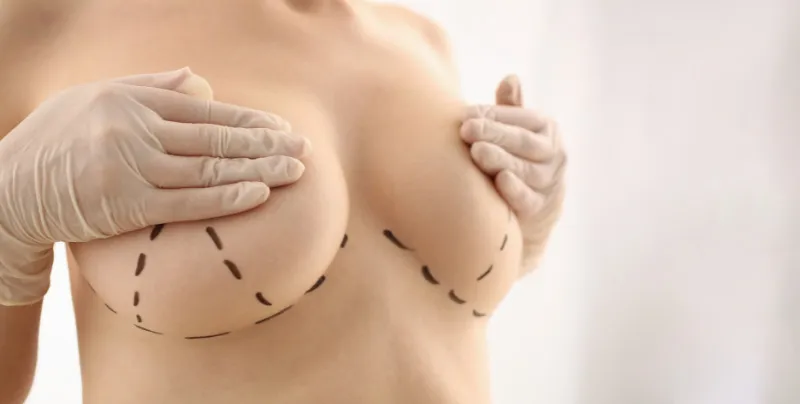Understanding Breast Fat: A Comprehensive Guide
Understanding Breast Fat: A Step by Step Handbook
Gynecomastia or the enlargement of the breast fat tissues is a very big issue that affects the majority of women. The problem is that as women age their hormones are different and with a poor diet and no exercise the body decides to store fat in areas such as the breasts. If you find your breasts being bigger or heavier not due to pregnancy or increase in weight then maybe it is due to fat deposit. All facts, tips, and recommendations that a woman would possibly require to know about breast fat are provided in this extensive read.
What Causes Excess Fat in the Breasts?
Several factors can trigger excess fat buildup in the breast area:Several factors can trigger excess fat buildup in the breast area:
Hormonal Changes
Technological advancements, heredity, obesity, hormonal fluctuations such as those that occur when a woman commences her menstrual period, is pregnant, or during menopause, will lead to the enlargement of the breasts. Breast development occurs during puberty and is primarily due to the presence of estrogen.
Progesterone is also used in the menstrual cycle and pregnancy. Progesterone usually falls after pregnancy and estrogen decreases during menopausal period which can again rearrange the breast fat distribution.
Weight Gain and Weight Fluctuations
Excess overall weight increases fat accumulation in the entire body, including breast tissue. In the same manner, changes in weight also affect breast fat if such changes are frequent and continuous. Noticeably, weight alternating also affects breast skin stretchability thus promoting fat deposit on breasts in the long-run.
Lifestyle Factors
Obesity is a result of poor dietary habits, unhealthy lifestyle which include, lack of exercise leading to fat deposition all over the body. Another factor is fat distribution in the breast area and this depends on some lifestyles such as smoking, taking alcohol, levels of stress, sleep etc. The best solution is to maintain proper standards of living.
Genetics
Breast size, shape, distribution of glandular tissues as opposed to fatty tissues is in part genetic, that is, you inherit it from your mother or father. After all, they are not wrong in stating that genetics does have some say in how prone one is to developing overgrown breast tissues.
Signs of Excess Breast Fat
How can one be sure that a person has excess fat in the breasts rather than regular breast tissue?
Enlarged Breast Size
This one is the most apparent sign of excess fat deposition in the breasts. You can go up several sizes and this is not over the course of several years, but in a relatively short period. Breasts also become tender and swollen, and may feel relatively heavier than before. Another pointer that you do not just gain excess weight but fat on your breasts is if you can see the obvious leakage from your regular bra cups.
Breast Tissue Feels Thick or Dense
Breasts that are denoted as being fatty are those whose fat content has made the tissue bulkier and more compact than normal breast tissue. They do not have the elastic soft texture of healthy breast tissue and you may feel them to be hard or even slightly nodular. This density often begins at the periphery of breast tissue.
Change in Breast Shape
Excess fat deposits change the size and shape of breasts because fat deposits affect their contour. They might look entirely different—more like a pancake that has lost all its fluff. Another common problem that develops in women is asymmetry and one breast may gather more fat than the other. Pendulous breasts are another shape change that originate from fat deposition.
Breast Pain or Tenderness
Breast pain may occur due to the pressure from fatty breast tissue on nerves and connective fibers due to the increased size of the fatty tissue in the breast. There are other side effects that are reported by some women who use extra strength, bruising, and sometimes soreness or even tenderness of breast before menstruation with other PMS symptoms.
Appearance of Lumps
It is not a lipoma or glandular breast tissue; instead, it is the deposition of fat in the breast region. However, it is also important to note that localized adipose tissue in the breast can be palpable as a lump or lumps within breast tissue. Unless these lumps of hardened fatty tissue are analyzed properly, the layman is likely to confuse it for something far more dangerous than a simple Lipoma.
Dangers of Excess Breast Fat
Letting excess breast fat go unchecked is not healthy for your breasts or overall well-being:Letting excess breast fat go unchecked is not healthy for your breasts or overall well-being:
Posture Problems
This is mostly because the extra weights brought about by fat deposits around the bust area put pressure on the spine thus leading to poor posture. It then becomes hard to exercise and hence more weight gain since bad posture is a result of obesity. Other related issues are chronic headaches, shoulder pains, upper back pains etc.
Skin Irritations
Large bust and excessive sweating in the areas of large bulky breasts provide the right conditions for growth of fungus. Skin rashes resulting from constant contact and skin friction caused by the formation of sweat are also typical complaints.
Bra Straps Grooving
Big bust line demands firm bras with broader straps to cope with the pressure that big breast demands. This is a real tragedy to give constant pressure to the shoulder skin and cut off circulation, which leaves marks permanently.
Emotional Distress
A sizable group of women suffers from psycho-emotional disorders and low self-esteem associated with an increased cup size. This is because the appearance causes them to be overly self-conscious, and thus they avoid social functions. This indicates that losing their femininity can actually influence the aspect of intimacy and relationships.
Future Health Risks
Expanding fatty tissue anywhere in the body boosts future health risks including metabolic diseases, heart diseases, high blood pressure, strokes, insulin resistance and so on. Breast fat particularly lifts the risk of breast cancer in some women.
What About Gynecomastia (Male Breast Fat)?
Some men also experience excess breast fat in the form of Gynecomastia also known as male breast. It often occurs at some point in life when the hormone levels are changing, for example during puberty or andropause. Symptoms are alike – bigger breasts and chest layer of fat lead to the experience of unpleasant emotions. There are also Secondary causes of gynecomastia which include factors such as liver disorders, tumors and certain drugs. Dieting commonly leads to decrease in chest fat There are various diets which reduce chest fat, Such as diets aimed at weight loss. In some other circumstances, the patient may need liposuction or surgical excision of the breast glandular tissue.
Can You Reduce or Remove Breast Fat?
The good news is accumulated breast fat can be effectively reduced or removed with consistent effort using:The good news is accumulated breast fat can be effectively reduced or removed with consistent effort using:
Improved Diet & Lifestyle
This is always achieved by avoiding foods that are processed or contain sugar while including plant proteins and fiber in your diet to avoid accumulation of fat around organs. Specify the avoidance of smoking, the reduction of alcohol consumption, stress management, and enough sleep. As minimal as 5% of the body weight loss has a visible decrease in breast fat.
Targeted Exercises
Perform strength training exercises that involve cardiogenic workouts, chest presses, push-ups, planking among others Strength training not only helps tone muscles, but also increases metabolism in the body hence assisting in shedding off excess weight. Although localized breakdown of fat is not a possibility in humans, the following guidelines may be useful in helping to reduce localized fat pads:by any means possible, overall fat loss does slim breasts. Yoga and pilates exercises also address posture problems that exacerbate breast fat.
Massage Therapy
Research shows that exercises such as lymphatic drainage massage and ultrasound therapy help in the reduction in localized oedema and breast pain resulting from accumulation of adipose tissue. However, experts recommend that there should be no assurance that the breast fat will reduce permanently through massaging without modifying the diet.
Topical Creams & Serums
Ingredients like caffeine, retinol, forskolin, green tea, black pepper extracts etc. contained in the tightening creams and serums only slightly alter the condition of loose breast skin and can reduce its thickness slightly. But it is often noted that breasts become much smaller, while in fact, the change is rather slight.
Posture Correctors
Supportive bras and posture braces, braces or other back supporting appliances enhance help to raise the heavy bust line from the rib cage. This eliminates undue rounding of the shoulders, and allows breathing correctly for the reduction of chest fat in the long run. Posture also prevents ache that is associated with large bosoms, hence the importance of maintaining a good posture.
Cosmetic Procedures
If the condition has persisted for years and natural remedy options have proved to be insufficient in addressing stubborn breast fat, then breast reduction surgery or liposuction may be required. Newer non-invasive fat reduction procedures offer hope to get rid of the unwanted bulges of localized fat in the human body . Yet, their effectiveness, especially towards the breast fat cells, is not fully established.
Breast Reduction
Liposuction or mastopexy: reduction mammoplasty, which is a surgical procedure that involves the elimination of the excessive fat and breast tissue as well as skin, also effectively reduces the size of overdeveloped breasts as a result of fatty deposits. It also gives an aesthetic benefit of getting rid of uneven skin tone and a health benefit of reducing skin discomfort.
Liposuction
Mastopexy with liposuction is a technique of reshaping of the contoured small breast where fat is found in abundance. Performed as a type of plastic surgery, it involves the vacuuming of localized fat deposits through tiny incisions with the surrounding tissue left unaffected. Perfect for male breast reduction surgery that results from excess fatty tissues under glandular tissue.
Fat Freezing
Otherwise known as fat freezing, it involves using a medical device to cool the targeted adipose tissue to below freezing point. Adipose cells accumulate and become transformed into crystallized forms in 2 to 3 months and die off from the body on their own by shedding fat naturally. Yes, but not for large volume breast fat reduction, and therefore not a standalone solution to removing larger volumes of fat.





Pingback: Bra Care Tips: Here are some of the most important things you need to know about how to wear your bras and make them last longer. - Nixo city is your safe place in an unsafe world 2024